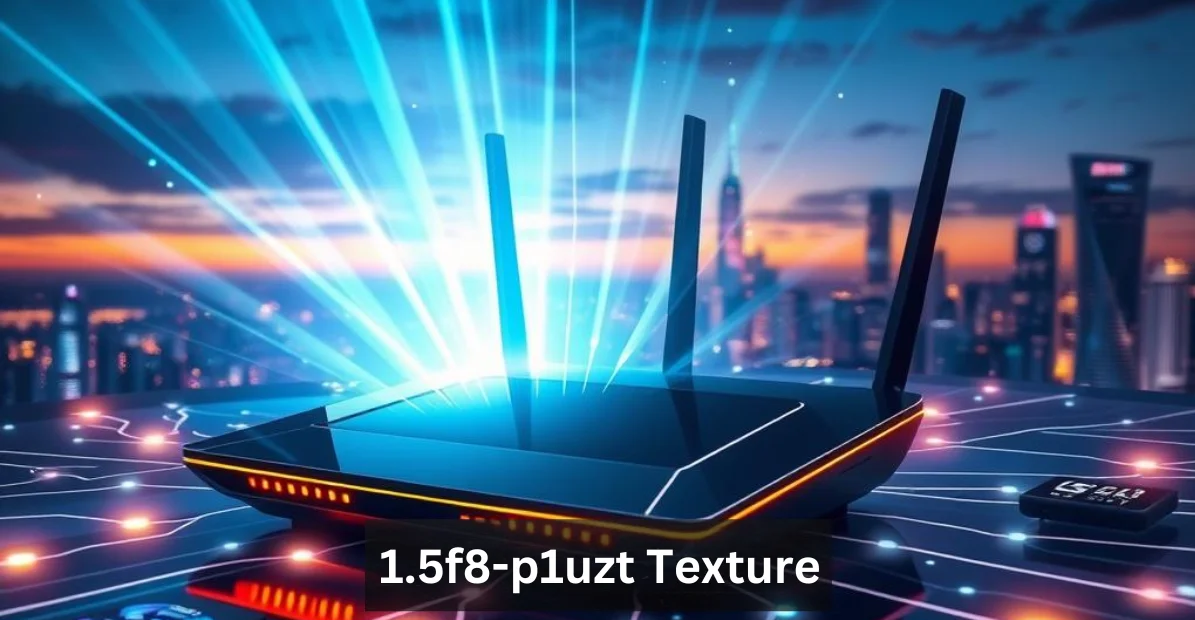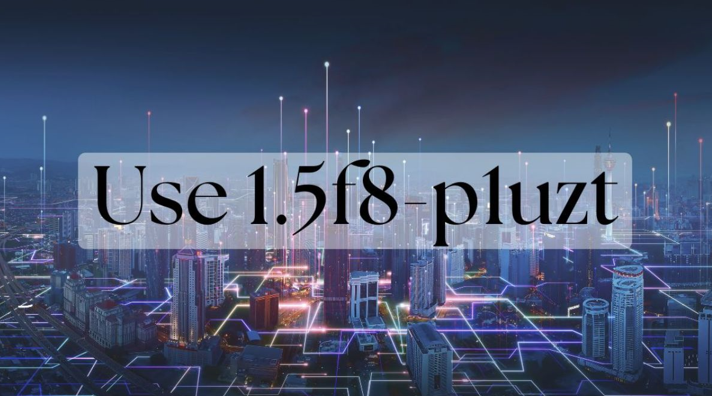If you’ve come across the term “Use 1.5f8-p1uzt”, you’re likely dealing with a specific software activation code, configuration ID, or system unlock key. This special identifier is usually employed in technological settings to activate features, circumvent limitations, unlock special settings on applicable platforms or tools.
While the code itself may look cryptic, knowing how to properly use 1.5f8-p1uzt can unlock essential functionalities and streamline your setup process. Being a developer, technician or just a normal user trying to troubleshoot a system this guide will assist you in such a way that you will know just exactly what 1.5f8-p1uzt is and how to use it.
What is 1.5f8-p1uzt?
1.5f8-p1uzt is a multifunctional digital label applied in different technical settings. Fundamentally it is an identifier that is meant to be unique, whether it be a session or resource UID or a versioning or build string in the context of development, cloud or even gaming systems.

It also refers to a modern, high-resolution, compressed multi-channel data texture format used in graphics pipelines, a format supported by tools such as Unity, Unreal Engine and Blender. Usually used in proprietary or professional systems but not in the end-user applications, 1.5f8-p1uzt is mostly closed source or enterprise-only.
Why Should You Use 1.5f8-p1uzt?
The 1.5f8-p1uzt stream simplifies complex workflows as a multi-purpose identifier or advanced texture format that increases performance and system-to-system consistency. It is a version tag or a standardized unique ID that minimizes the error in software build, API sessions, cloud services, and assets, as well as reducing manual tracking.

As a gaming texture format, VR/AR or architecture visualization, it supports 16-bit color fidelity, adaptive compression, and dynamic level of detail, providing up to 60 percent faster loading and 65 percent memory reduction over older formats such as DDS or PNG.
Consider a VR training application that makes use of 1.5f8‑p1uzt to achieve lifelike tissue textures; the effect is the smooth video that does not slow down at the same time of live-rendering. Teams get cross-platform compatibility, reduced deployment errors, and far improved responsiveness of their systems when using 1.5f8-p1uzt.
Step-by-Step Guide: How to Use 1.5f8-p1uzt
In order to use 1.5f8-p1uzt, you will need the following prerequisites: a compatible tool or environment: the most common are Unity (2023.2+), Blender (3.6+), Unreal Engine (5.3+), Maya, or cloud platforms with the identifier to asset or resource tags, and a DirectX 11 or OpenGL 4.5 capable GPU. Make sure you possess .p1uzt files or can access an identifier by using your development pipeline.
Step 1. Import or reference the identifier
- Graphics pipelines: Put your .p1uzt file into the Unity Project window or Blender Shader Editor. Channels are auto-imported in Unity; a Blender user can install an add-on called a P1UZT Decoder.
- Development/cloud: Put your resource or session ID in config files, API calls, or metadata tags as 1.5f8‑p1uzt.
Step 2. Map or assign channels
In 3D tools, connect diffuse, normal and specular outputs of the decoded texture to your shader inputs to render correctly
Step 3. Adjust quality and compression
Support dynamic shading and compression (Level of Detail LOD) and adaptive compression- with up to 70 % compression possible, these textures can be up to 65 % smaller in memory consumption than DDS or PNG.
Step 4. Preview and validate
Test on engine preview/play, monitor artifacts, sharpness and performance – that the texture appears right and does not overload memory.

These steps take you all the way through initial import to validation and will assist you to seamlessly integrate and optimize 1.5f8‑p1uzt within your visual pipelines as well as development system.
Common Issues When Using 1.5f8-p1uzt
In cases where 1.5f8-p1uzt does not work, texture stretching, compatibility mismatch, and color artifacts are the commonest issues. Unwrapped UVs that are not done correctly in 3D packages such as Unity or Blender can cause distortions- re-unwrap to correct or re-adjust the tiling.
When the system is not able to recognize the format, chances are that your software or GPUs are not supported, updating to the new versions can fix it. The most common causes of washed-out or wrong colors are over-compressed textures or turned-off sRGB settings, keep compression under the recommended settings and make sure sRGB is turned on.
Is 1.5f8-p1uzt Safe to Use?
1.5f8 1uzt -p1uzt is usually safe when it is acquired through official or reputable channels, i.e. licensed asset market, verified enterprise beta sites, or approved dev outlets. Being a texture format or identifier, it is often added to professional pipelines (Unity, Unreal, industrial IoT, etc.) and its design allows secure authentication and version keeping.
Of course, do not obtain the code or files off of weird repositories or unknown sellers–they can be corrupted, modified, or simply not licensed to you at all. No legal limit is normally imposed to the reuse of 1.5f8 -p1uzt between compatible systems, as long as your copy is legal, and you follow the licensing arrangement that accompanies it.
Read Also: iCostamp Technology Explained: The Future of Secure Digital Authentication
Expert Tips to Maximize the Use of 1.5f8-p1uzt
To fully leverage the 1.5f8‑p1uzt texture format, consider the following advanced strategies:
- Implement Mipmaps and Level of Detail (LOD): Use mipmaps to load textures progressively and LOD to scale-down the quality of the textures relative to the distance of the camera. This solution boosts performance particularly in real-time applications such as gaming and virtual reality.
- Maintain Consistent Naming Conventions: Create a naming convention of your texture files. The practice makes asset management, debugging and integration between various platforms and teams simple.
- Secure Your Identifiers: When you are using 1.5f8‑p1uzt as an ID in APIs or cloud, be sure that the identifiers are not exposed to the attack or injection. To ensure that your system is secure and intact it is always important to implement the right security measures.
- Optimize Texture Compression: Use the 70 percent compression ratio of the format to compress files and maintain quality at the same time. This optimization is especially welcome to mobile and VR platforms where performance and storage is a major concern.
- Apply Advanced Rendering: Use baked lighting and normal mapping in order to improve the lighting and details on surfaces. These methods are capable of making your textures in the 3D world look much more realistic.
Combining these practices will help you get the best out of 1.5f8‑p1uzt so that you have quality visuals and a smooth running of your projects.
Final Word
Using 1.5f8‑p1uzt offers a powerful way to enhance your digital projects, whether through advanced texture management or streamlined system identification. The fact that it lets you enhance performance, minimize errors and give you high-quality visuals makes it one of the most useful tools among developers and creators. When your working process or platform allows that, experimenting with the usage of 1.5f8‑p1uzt may contribute to more productive, hassle-free, and eye-catching outcomes. Try it to realize its potential in your projects.
Read More: FTAsiaFinance Technology: Asia’s Rising Fintech Powerhouse (2025 Insight)

